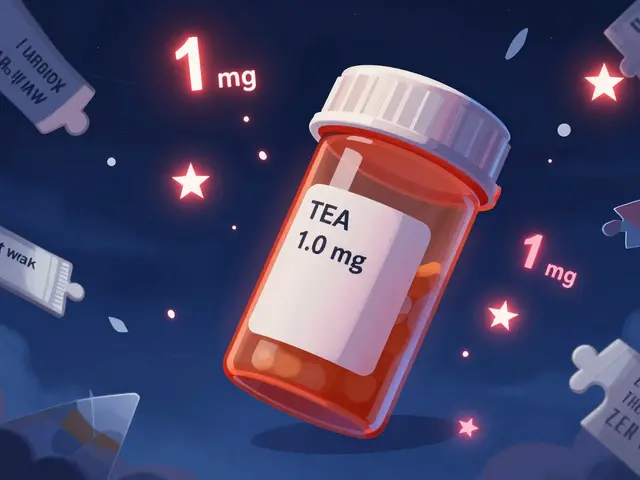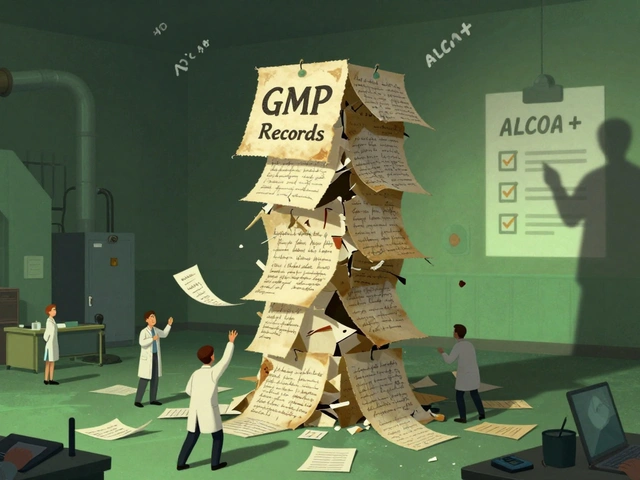April 2025 roundup: practical updates on pain, blood pressure, diabetes and migraine
Short and useful: this month we published four practical guides aimed at people juggling symptoms, side effects, or confusing drug choices. Each piece cuts through the noise and gives clear next steps you can take with your clinician.
What we published
Low‑Dose Naltrexone: The Gabapentin Alternative for Neuropathy & Chronic Pain in 2025 — Researchers ran pilot trials and clinicians are sharing early results. Key point: LDN (often 1–5 mg nightly) is being tried where gabapentin didn’t help or caused sedation. The article maps dosing tips, safety notes, and what to expect in follow‑up so you can ask targeted questions at your visit.
Amlodipine Interactions: How to Combine Medications Safely — Amlodipine works well for blood pressure but mixes poorly with a few meds and foods. We flagged common culprits (strong CYP3A4 inhibitors, certain antihypertensives, and grapefruit) and gave simple rules for spotting risky combos and talking to your pharmacist.
Pioglitazone Alternatives in 2025: Exploring Your Options for Diabetes Management — If pioglitazone worries you, this guide lists current alternatives (metformin, GLP‑1 agonists, SGLT2 inhibitors, insulin when needed), shows where each shines, and compares side effects and costs. It helps you frame a realistic plan based on weight, heart/kidney concerns, and budget.
10 Alternatives to Topiramate: Exploring Your Options — From CGRP injectables like Ajovy (fremanezumab) to beta‑blockers, Botox, and newer oral options, we broke down who might benefit from each choice, how quickly to expect results, and trade‑offs like cost and monitoring.
Quick takeaways and next steps
If you’re exploring LDN for nerve pain, note that evidence is early. Ask your prescriber about trial duration (often 6–12 weeks), starting dose, and what side effects to watch for. Keep a pain and sleep diary to judge benefit.
With amlodipine, run a quick meds list past your pharmacist. Mention herbal supplements and grapefruit. If you take statins or antifungals, your provider may tweak doses or choose safer combos.
For diabetes, match the drug to your goals: weight loss, heart protection, or simple blood‑sugar control. If cost is the issue, ask about generics and assistance programs—many clinics can help with pricing options.
For migraine, try one change at a time and give it the recommended trial period. If injections or newer pills are on the table, compare expected benefit, insurance coverage, and side effects before switching.
Want a fast next step? Print the short notes from each article and bring them to your next appointment. That turns vague worry into a focused conversation and makes it easier for your clinician to help you pick the safest, most practical option.
Amlodipine Interactions: How to Combine Medications Safely
Mixing medications with amlodipine can throw a wrench in your treatment if you’re not careful. This article breaks down common drug interactions, why they matter, and the smartest ways to handle your medicine cabinet. Get real-world tips for spotting risky combos and talking to your doctor. Stay safer by knowing what works (and what doesn’t) with amlodipine. Treat your daily pills with the respect they deserve.
Low-Dose Naltrexone: The Gabapentin Alternative for Neuropathy & Chronic Pain in 2025
Low-dose naltrexone (LDN) is catching eyes as a gabapentin alternative for neuropathy and chronic pain. This article breaks down pilot trial findings, practical prescribing tips, dosage details, and safety notes. It also explores how LDN measures up to longtime favorites like gabapentin and what real patients and doctors are saying in 2025. Dig into what really works, minus all the hype, to get helpful insights for anyone considering new options for nerve pain relief.
Pioglitazone Alternatives in 2025: Exploring Your Options for Diabetes Management
This article takes a close look at the top alternatives to pioglitazone for diabetes management in 2025. It explains how each option works, what it’s good at, and where it falls short. The guide also gives plain tips to help you choose the right medication for your lifestyle or health concerns. If you’re worried about side effects, cost, or new treatment trends, you’ll find practical info here. The aim is to give you the facts you need—simple and clear.








